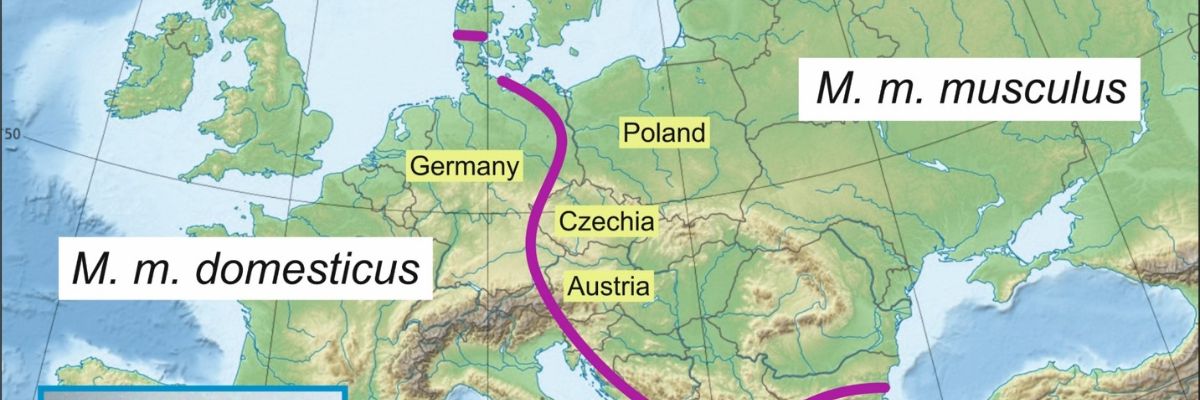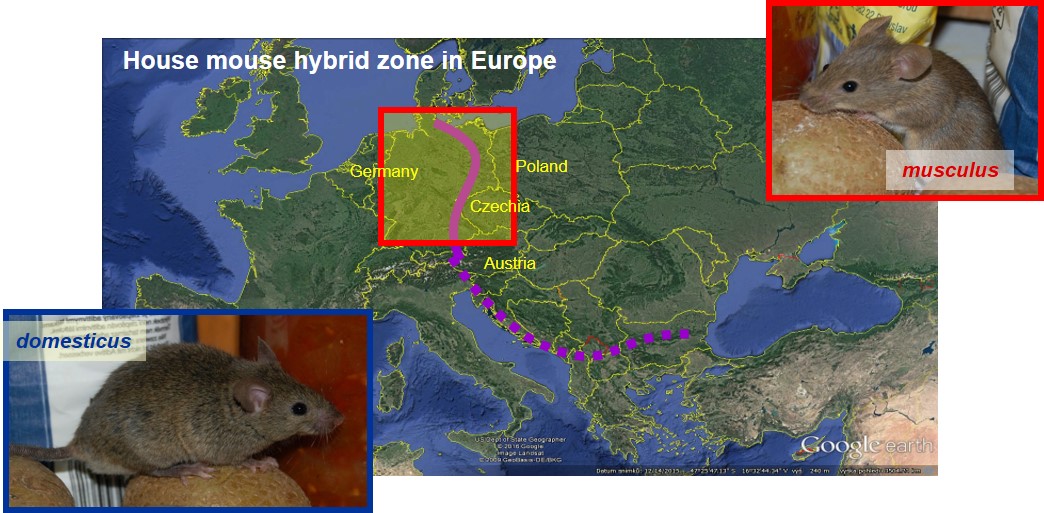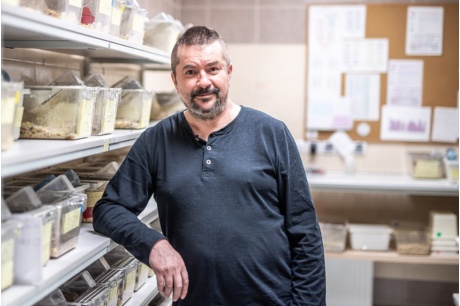
Of Mice and Men: Researchers reveal link between human and mouse migration paths
11. 11. 2024
The close relationship between house mice and humans offers scientists a unique opportunity to study historical human migrations. A recent study by researchers from the Institute of Animal Physiology and Genetics of the CAS and the Institute of Vertebrate Biology of the CAS, published in the Zoological Journal of the Linnean Society, brings new insights. The extensive research included genetic samples from over 8,000 mice and is reshaping our understanding of the colonization of Europe by mice, providing a fresh perspective on human–animal interactions.
The ancestor of the house mouse emerged roughly half a million years ago on the Indian subcontinent or the Iranian plateau. Around 12,000 years ago, mice joined human societies, gradually spreading worldwide alongside human populations.
Mice migrated to Europe primarily along two routes. One group followed a northern route above the Caucasus, while the other moved along the Mediterranean coast. During these long migrations, the genetic makeup of individual mouse populations changed, though not enough to diverge into distinct species. Instead, they evolved into two subspecies: the “Eastern” Mus musculus musculus and the “Western” Mus musculus domesticus.
Current research now reveals that the colonization of Europe by these two subspecies unfolded differently. While the Eastern subspecies has spread across Europe along a single major route, the Western subspecies took multiple paths. “Our results show that the story of mouse migration in Europe is far more complex than we had previously thought,” says Miloš Macholán from the Institute of Animal Physiology and Genetics of the CAS.

The hybrid zone marks the boundary between two worlds of mice, where the Eastern and Western subspecies interbreed and produce hybrid offspring. This narrow, geographically well-defined zone of secondary contact provides scientists with an exceptional opportunity to study genetic differences between the subspecies. Part of this boundary runs through the western tip of the Czech Republic.
A unique genetic blend in northern European mice
The newly published study brings us new details about the population of mice in northern Europe. Earlier hypotheses suggested that mice were absent in Scandinavia until the Nordic Bronze Age, or that it was Eastern mice to first colonize the north, only to be displaced by Western mice.
However, researchers have identified some problems with both these theories and are now proposing an alternative scenario: the Western subspecies of the house mouse likely arrived in northern Europe first, alongside Germanic tribes, while the Eastern subspecies spread later, in conjunction with the migration waves of Slavic peoples.
“Unlike previous studies, we base our approach on current evidence of extensive trade networks between central, western, and northern Europe during the Bronze Age,” Macholán explains. “Subsequent colonization phases were likely linked to the departure of Germanic tribes and the arrival of Baltic–Slavic tribes into these vacated areas. As we suggest, this process may have created the unique genetic blend observed in northern European mice,” the researcher adds.

Miloš Macholán, from the Institute of Animal Physiology and Genetics of the CAS, focuses on genetic and phenotypic variability and the systematics of small mammals, the evolution of the genus Mus, hybridization, and speciation in the house mouse. In 2022, he received the Academia Publishing Award for co-authoring Systematics and Phylogeny of Mammals with Jan Zima. (CC)
A borrowed piece of DNA
Genetic findings indicate that in the northern part of the European hybrid zone, the Eastern subspecies of the house mouse “borrowed” mitochondrial DNA from its Western counterpart, resulting in the nuclear DNA of the Eastern subspecies paired with the mitochondrial DNA of the Western subspecies.
“During our research, we analyzed an extensive dataset of more than 7,000 mouse samples across a 900-kilometer-long section of the hybrid zone in Europe along with an additional thousand samples from all over the world,” says Jaroslav Piálek from the Institute of Vertebrate Biology of the CAS.

Jaroslav Piálek is the head of the breeding facility for wild-derived strains (WDS) of mice, established from animals originally captured in natural habitats. He co-edited the book Evolution of the House Mouse (2012, Cambridge University Press). Alongside Jan Zima, he founded and led a research department at the Institute of Vertebrate Biology of the CAS in Studenec from 1998 to 2010. (CC)
According to the researchers, this study not only redefines our understanding of mouse colonization in Europe, but also opens new avenues for investigating human history. Genetic traces in mouse populations help us better understand historical human migrations and the accompanying cultural and biological interactions.
We previously covered the unique hybrid zone of the house mouse – a natural laboratory for studying evolution – in the feature “Evolution, alive and well. What lies at the heart of biodiversity?” first printed in the 1/2024 issue of the popular science quarterly of the CAS, A / Magazine.
Written and prepared by: Leona Matušková, External Relations Division, CAO of the CAS, drawing on the CAS press release
Translated by: Tereza Novická, External Relations Division, CAO of the CAS
Photo: Shutterstock; Institute of Vertebrate Biology of the CAS archive; Jana Plavec, External Relations Division, CAO of the CAS
 The text and photos labeled CC are released for use under the Creative Commons license.
The text and photos labeled CC are released for use under the Creative Commons license.
Read also
- Renewables are a strategic investment in European security, scientists say
- New record set for neutrino mass: one million times less than an electron
- On the trail of the endangered little owl: searching for newly hatched owlets
- Teen scientist breaks barriers: No child is a lost cause
- The Czech Academy of Sciences has appointed its new leadership for 2025–2029
- Literature is tied to its historical context. How can we read between the lines?
- Radomír Pánek: The Academy must be united, strong, and proactive
- A springtime booster: The healing potential of tree buds
- A novel compound that protects bone cells may benefit diabetic patients
- New interactive exhibition at the CAS showcases materials shaped by genius ideas
The Czech Academy of Sciences (the CAS)
The mission of the CAS
The primary mission of the CAS is to conduct research in a broad spectrum of natural, technical and social sciences as well as humanities. This research aims to advance progress of scientific knowledge at the international level, considering, however, the specific needs of the Czech society and the national culture.
President of the CAS
Prof. Eva Zažímalová has started her second term of office in May 2021. She is a respected scientist, and a Professor of Plant Anatomy and Physiology.
She is also a part of GCSA of the EU.